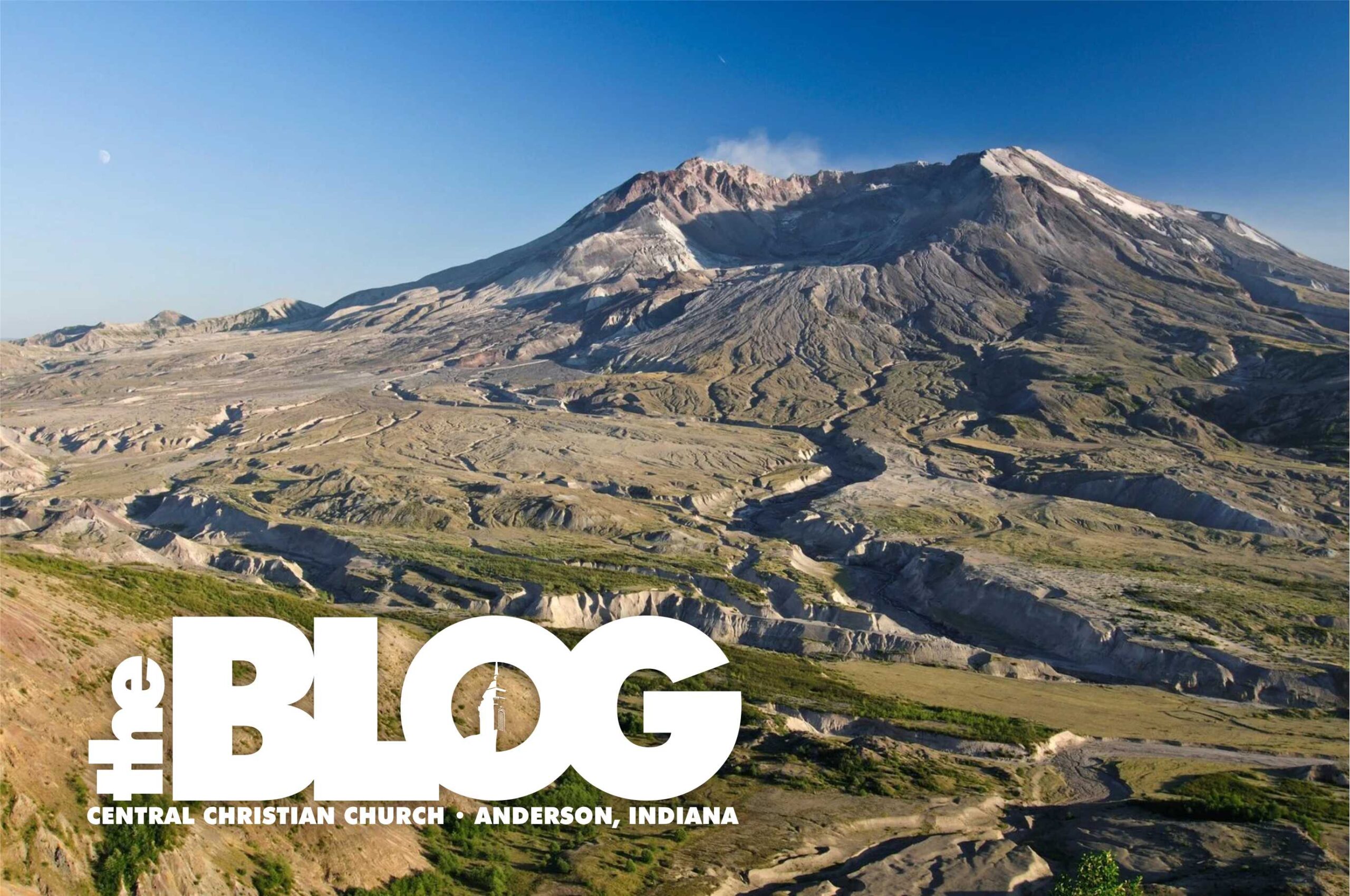WHEN THE MOUNTAIN BLEW

722
It was 43 years ago this week (May 18th, to be exact and hard to believe) that Mount St. Helens erupted. It was a Sunday, early in the morning, I was living in Seattle. What I remember is that I heard a sound outside my house, like someone had thrown a big ball up against the wall – it was loud enough that I looked out the window. But the mountain was far enough away that I wouldn’t have seen anything. The wind was blowing east and the mountain was some hours south of Seattle, so it wasn’t until we were in church that we heard about the eruption. Later in the day, during an outdoor bar-b-que, a few of us guys got up on the roof of the house (which was on a hill) and looked with binoculars at the ash cloud in the distance. But we were somewhat unaffected by it all.
My parents, some 4 hours east, were at church. My Mom was a greeter that day, standing at the door and watching a dark cloud in the distance grow larger and larger with every hour. When the announcement was broadcast that the mountain had erupted and the cloud that all of eastern Washington was seeing was an ash cloud, church was cancelled, and people were told to go home. No one really knew what the cloud contained; something poisonous? Something dangerous? And so, to avoid panic, people were sent home. They had a totally different experience than we did in Seattle.
Then there was the woman with her two kids, travelling close to the mountain in their station wagon when the mountain blew. Suddenly, she said, the sky was black and all around her was chaos: trees were being stripped of their limbs, lakes were evaporating. She made her kids lie down in the car and drove as fast as she could, but finally couldn’t see where she was going, and then her tires melted, and she was stuck. Her mind shut down, unable to comprehend what was happening. Her children were terrorized by the event, and her reaction.
She spoke from her home, weeks later, after returning from the hospital where she was treated for shock. You see, to HER it seemed as if the world had ended. Everywhere she looked, everything she saw was black, desolate and alien. She saw no living creatures but herself and her children. She had no idea if the devastation had consumed the entire world or not. That experience made her lose her mind a little. When she and her children were discovered a few hours after she pulled over on the back road she was travelling, she was incoherent, her children were panic-stricken and in shock. She was brought around when she was shown photos of her home and city still intact; when she was shown that the eruption, though massive, didn’t destroy the world. Even though, from her perspective, the world was destroyed.
That’s what I took away from the story. From her perspective the entire world (or, at least, her world) was destroyed. It was only when care-givers understood HER perspective that they could break through and help her.
We all have trauma; we all have to deal with devastation in our own lives at times. Sometimes we fail to get the support we need because others around aren’t feeling the same effects of that trauma, as we are. This should be a lesson to us. As Jesus dealt with each living being according to THEIR need and THEIR perspective…so should we be able to “put ourselves in their place” and therefore help to bring them out. Just because you or I may not react in the same way to the same predicament doesn’t mean that another’s pain is less important. Sometimes we reject the call to care because we don’t think that person is really “that bad off”.
On May 18, 1980 I was barely affected by the “blast”, as we called it. While just a few miles away a woman and her children thought their world was gone.
Every day we walk next to someone whose world is collapsing and every day we are reminded, by God, that the way to His heart is to love our neighbor. Today, this week, watch for, reach out to, and love the ones that God sends our way.

